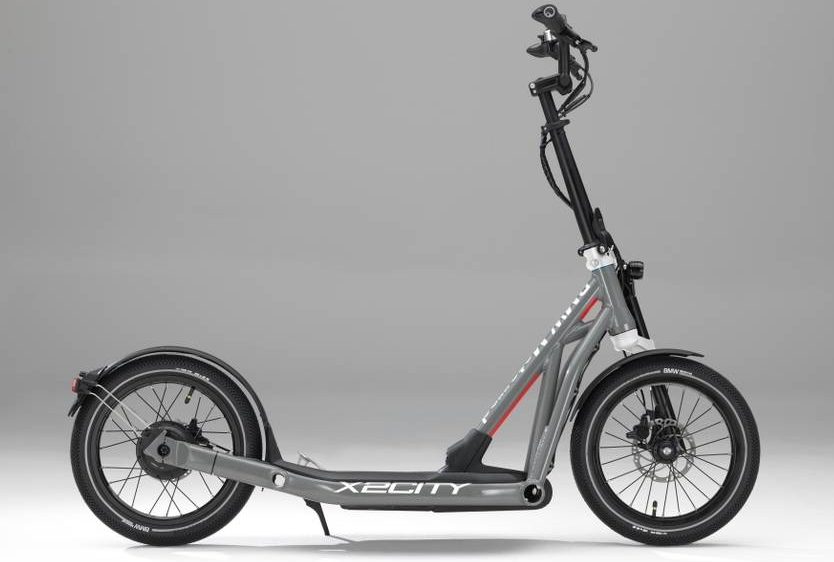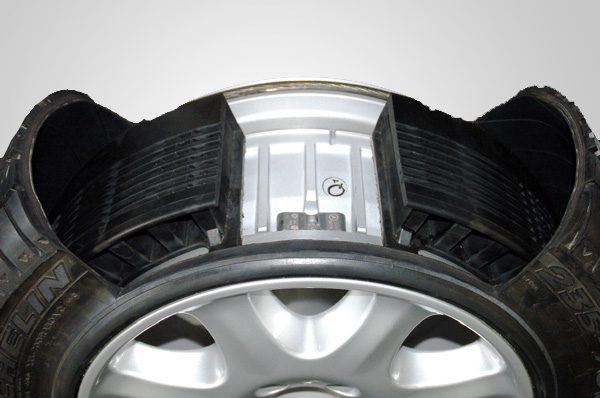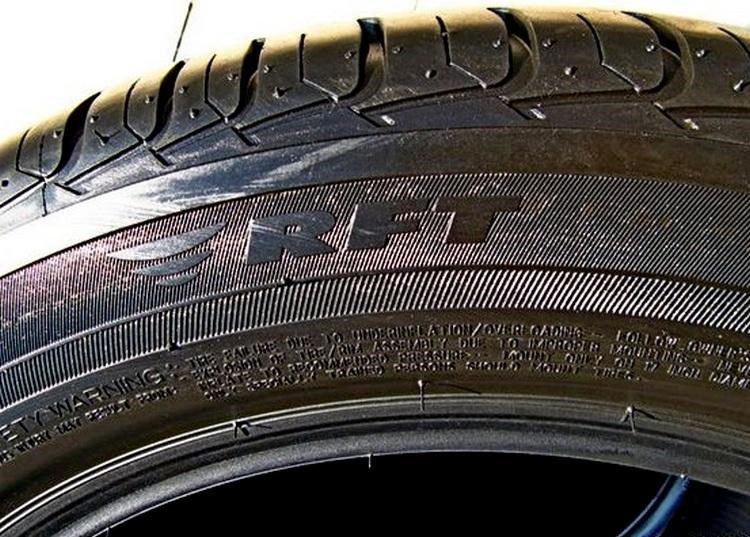
Run flat tires that are puncture resistant
Content
- What is RunFlat?
- How does RunFlat tire work?
- What are we for
- What does the RSC label on the tire mean?
- What does MOExtended (MOE) mean on a tire?
- What does the AOE label on the tire mean?
- What makes Run Flat tires different from regular tires?
- How many kilometers and at what maximum speed can I go after a puncture?
- Do you need special rims for Run Flat tires?
- Do you need special tire fitting equipment to flush these tires?
- Is it possible to repair Run Flat tires after a puncture?
- Limitations and Recommendations for Fitting Run-Flat Tires
- Pros and cons of Run Flat tires
- Questions and answers:
The main enemy for any car tire is sharp objects that can sometimes be "caught" on the road. Often a puncture occurs when a vehicle pulls over to the side of the road. To reduce the likelihood of depressurization and thereby increase the popularity of their products, tire manufacturers are implementing a variety of smart tire designs.
So, in 2017 at the Frankfurt Motor Show, Continental presented its vision of what a smart wheel should be to the world of motorists. The developments were named ContiSense and ContiAdapt. They were described in detail in separate review... However, such modifications can suffer puncture damage.
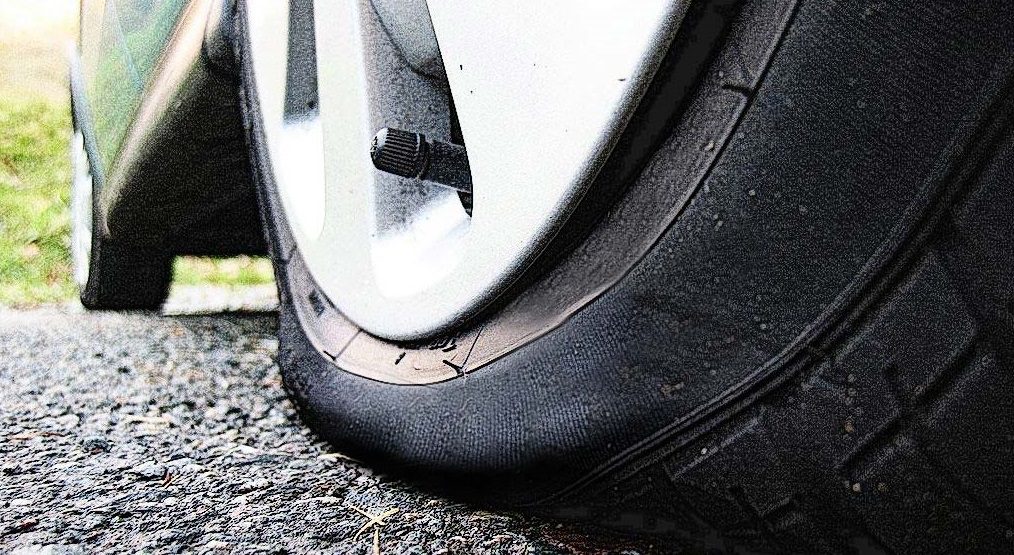
Today, many tire manufacturers have developed and successfully used run flat tires. We will understand the features of production technology, as well as how to determine whether such products belong to this category.
What is RunFlat?
This concept means a modification of automobile rubber, which is created using a special technology. The result is a robust product design that makes it possible to continue driving on a punctured wheel. In this case, neither the disc itself nor the tire deteriorates (if the driver adheres to the manufacturer's recommendations). This is how the name of the technology translates: "Launched". Initially, this was the name of tires with a reinforced side part (a larger layer of rubber).
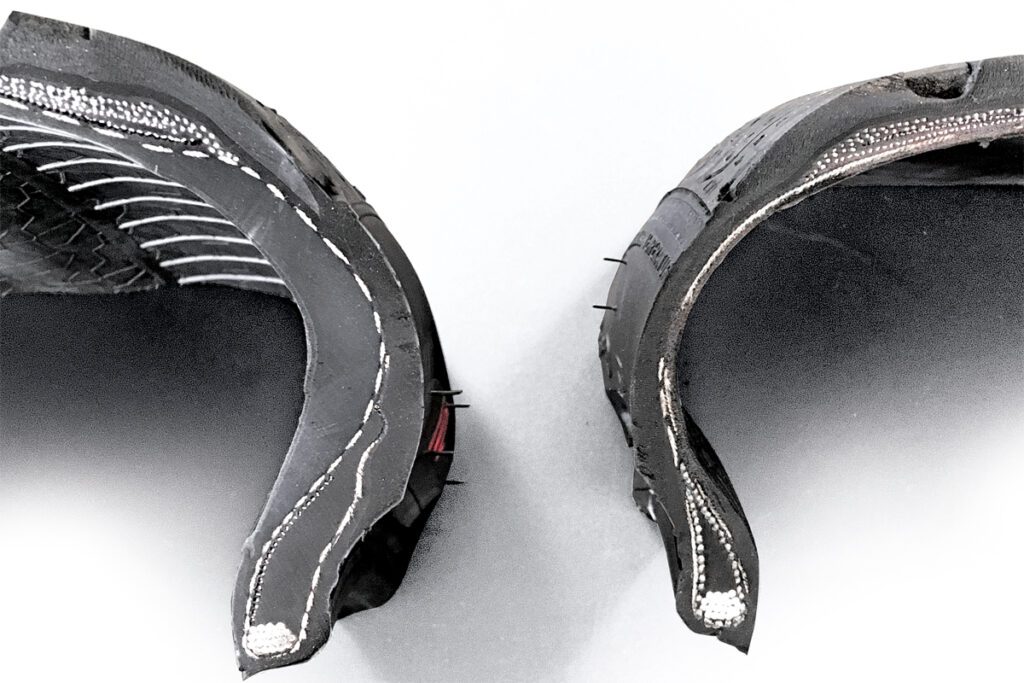
A modern manufacturer in this concept puts any modification that is protected from punctures, or that is able to withstand the load at some distance, even if it is deflated.
This is how each brand calls such a modification:
- Continental has two developments. They are called Self Supporting RunFlat and Conti Support Ring;
- Goodyear labels its reinforced products with ROF;
- The Kumho brand uses XRP lettering;
- Pirelli's products are called RunFlat Technology (RFT);
- Bridgestone products are marked in a similar way - RunFlatTire (RFT);
- The renowned manufacturer of quality tires Michelin has named its development "Zero Pressure";
- Yokohama's tires in this category are called Run Flat;
- The Firestone brand has named its development Run Flat Tire (RFT).
When buying tires, you should pay attention to the designation, which is always indicated by the manufacturers of automotive rubber. In some cases, this is just a classic reinforced version that allows you to ride on a completely flat tire. In other models, the car must have different stabilization systems, for example, automatic wheel inflation or stability control system, etc.
How does RunFlat tire work?
Depending on the production technology used by a particular company, a puncture-free tire can be:
- Self-regulating;
- Reinforced;
- Equipped with support rim.
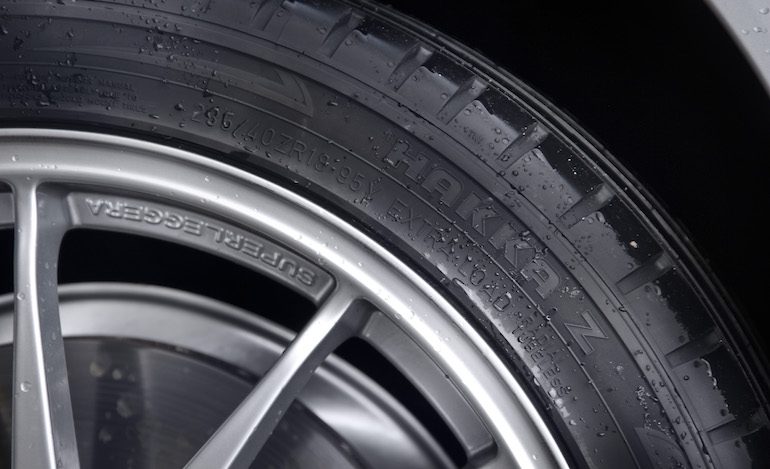
Manufacturers can call all these varieties Run Flat, although in the classical sense of this term, rubber from this category simply has a reinforced sidewall (the side part is thicker than the classic analogue). Each variety works according to the following principle:
- The self-adjusting tire is the most common tire for puncture protection. There is a special sealant layer inside the tire. When a puncture is formed, the material is squeezed out through the hole. Since the substance has adhesive properties, the damage is repaired. An example of such a tire is Continental NailGard or GenSeal. Compared to classic rubber, this modification is about $ 5 more expensive.
- A reinforced tire is almost twice as expensive as a regular tire. The reason for this is the complexity of manufacturing. As a result, even with a completely empty wheel, the car can continue to move, although the speed in this case must be reduced in accordance with the manufacturer's recommendations, and the length of the trip is limited (up to 250 km.). The Goodyear brand is a pioneer in the production of such tires. For the first time, such products appeared on store shelves in 1992. Such rubber is equipped with premium models, as well as armored versions.
- Wheel with inner support hoop. Some manufacturers install a special plastic or metal rim on the wheel rim. Among all the developers, only two brands offer such products. These are Continental (developed by CSR) and Michelin (PAX models). For production cars, it is not reasonable to use such modifications, since they are very expensive, and they also require special wheels. The cost of one tire varies around $ 80. Most often, armored vehicles are equipped with such rubber.

What are we for
So, as can be seen from the features of the varieties of puncture-free tires, they are needed in order to reduce the time spent on the road when a breakdown occurs. Since such rubber allows the motorist to continue to drive in emergency mode without harm to the rim or tire, he does not need to put a spare tire in the trunk.
To use these tires, the driver must take into account some requirements:
- First, the vehicle must have a stability control system. When a severe puncture forms at high speed, the driver can lose control of the vehicle. To prevent him from getting into an accident, the dynamic stabilization system will allow you to safely slow down and stop.
- Secondly, some types of tires need to be re-pressurized when punctured (for example, these are self-sealing modifications). While the car gets to the place of repair, the system will maintain the pressure in the punctured wheel as much as possible in case of severe breakdowns.
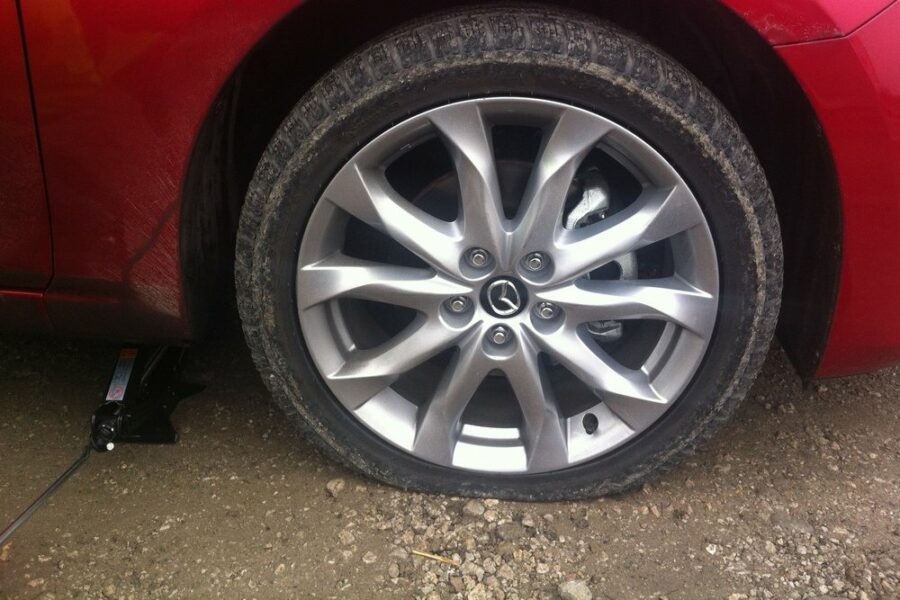
Highlights reviewed. Now let's take a look at some common questions regarding RunFlat rubber.
What does the RSC label on the tire mean?
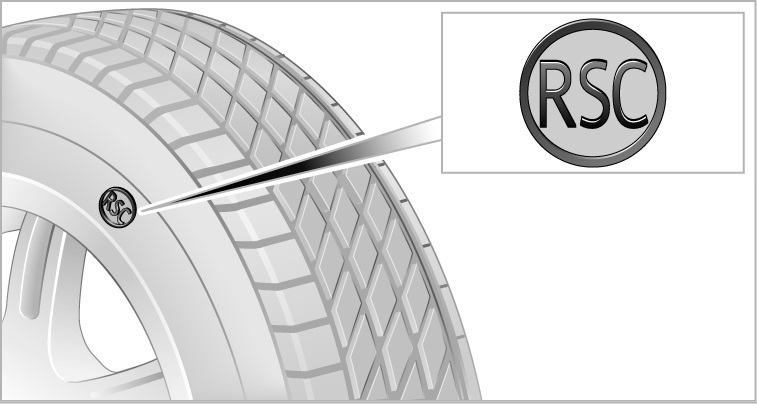
This is the single term used by BMW to indicate that this tire is puncture-free. This marking is used on modifications for BMW, Rolls-Royce and Mini cars. The inscription stands for RunFlat Component System. This category includes various products that may have an internal sealant or a reinforced frame.
What does MOExtended (MOE) mean on a tire?
The automaker Mercedes-Benz uses the MOE mark for puncture-free tires of any modification. The full name of the development is Mercedes Original Extended.
What does the AOE label on the tire mean?
Audi also uses the same designation for runflat tires of different designs. For all its car models, the manufacturer uses the AOE marking (Audi Original Extended).
What makes Run Flat tires different from regular tires?
When a normal wheel is punctured, the weight of the vehicle deforms the bead of the product. At this moment, the edge of the disc strongly presses part of the rubber to the roadway. Although this slightly protects the wheel itself from damage, the rim acts as a knife, spreading the tire around its entire circumference. The picture shows to what extent the rubber compresses under the weight of the car.
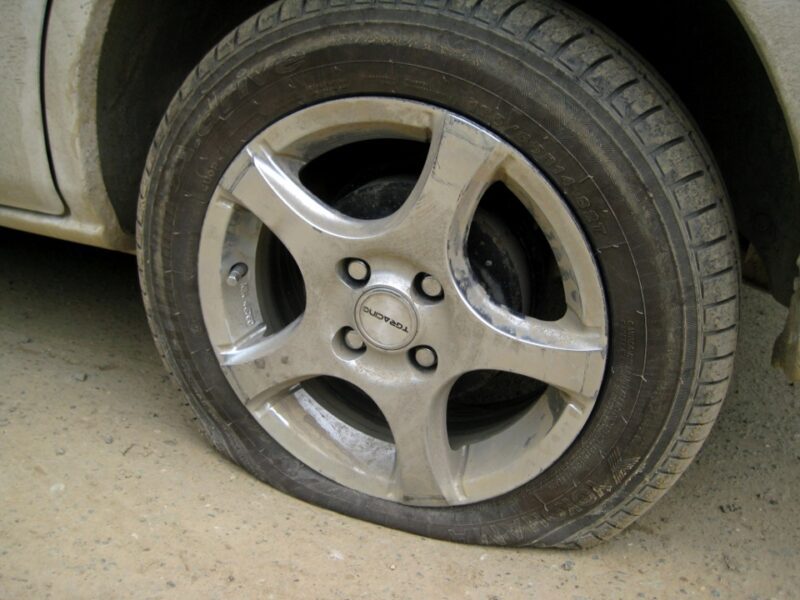
A runflat type tire (if we mean its classic modification - with a reinforced sidewall) does not deform so much, which makes further driving possible.
Structurally, "ranflat" may differ from the usual options in the following parameters:
- The side ring is much stiffer;
- The main part is made of heat-resistant composition;
- The sidewall is made of a more heat-resistant material;
- The structure may contain a frame that enhances the rigidity of the product.
How many kilometers and at what maximum speed can I go after a puncture?
To answer this question, you need to focus on the advice of the manufacturer of a particular product. Also, the distance that a flat tire can cover is affected by the weight of the car, the type of puncture (self-sealing modifications in case of lateral damage require replacement, you cannot go on them further) and the quality of the road.
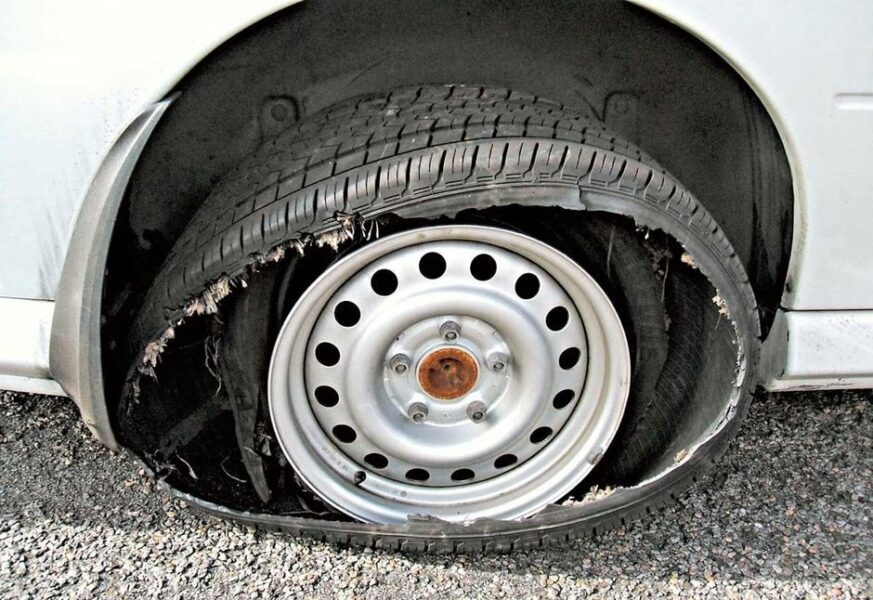
Most often, the permissible distance does not exceed 80 km. However, some reinforced tires or models with a reinforced rim can cover up to 250 km. However, there are speed limits. It should not exceed 80 km / h. and that is, if the road is smooth. Poor road surface increases the load on the sides or stabilizing elements of the product.
Do you need special rims for Run Flat tires?
Each company uses its own method of making runflat modifications. Some manufacturers focus on strengthening the carcass, others on the rubber composition, and still others change the tread part so as to minimize the puncture of the product during operation. However, the cortical part of all modifications remains unchanged, so such rubber can be installed on any rims of the corresponding size.

Exceptions are models with a support rim. To use such tire models, you need wheels on which you can attach an additional plastic or metal amplifier.
Do you need special tire fitting equipment to flush these tires?
Some manufacturers sell tires already complete with rims, but each customer can choose whether to buy such a set or purchase separately puncture-free tires. Do not think that such rubber is adapted only for specific disks. Rather, it is a marketing ploy of some brands, for example, Audi or BMW.
As for models with a sealant on the inside, such tires will be installed at any tire service. To mount the version with a reinforced sidewall, you will need modern tire changers such as Easymont (third hand function). It will take some experience to mount / disassemble such a wheel, therefore, when choosing a workshop, it is better to immediately clarify these subtleties, and especially whether the craftsmen have worked with similar products before.
Is it possible to repair Run Flat tires after a puncture?
Self-sealing modifications are repaired like regular tires. The punctured reinforced analogs can also be restored only if the tread is damaged. If there was a side puncture or cut, the product is replaced with a new one.
Limitations and Recommendations for Fitting Run-Flat Tires
Before using puncture-free tires, the driver must take into account that his car must have a wheel pressure monitoring system. The reason is that the driver may not feel that the wheel is punctured, since the weight of the car is supported by the side of the rubber. In some cases, the softness of the car does not change.
When the pressure sensor registers a decrease in the indicator, the driver must slow down and head to the nearest tire fitting.
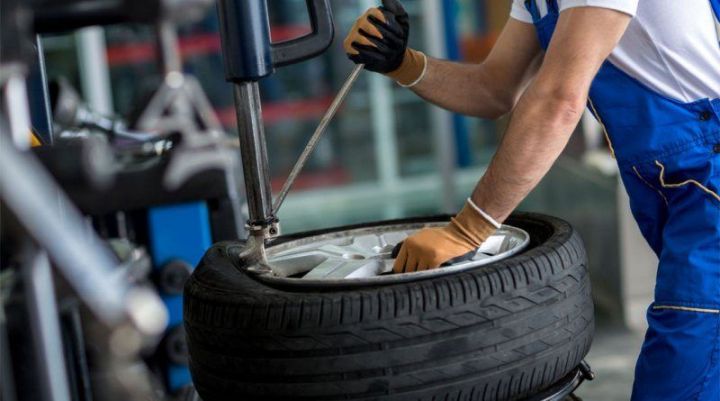
It is imperative to install such a modification if the factory equipment of the car provided for the presence of such rubber. This must be done, because when designing a specific car model, engineers adapt its travel and suspension also to the parameters of the tires. In general, classic reinforced tires are stiffer, so the suspension must be appropriate. Otherwise, the car becomes not as comfortable as the manufacturer intended.
Pros and cons of Run Flat tires
Since the Run Flat category includes all types of models that are puncture-proof or allow you to ride for a while if the wheel is damaged, then the advantages and disadvantages of each of the modifications will be different.
Here are the pros and cons of the three main categories of rugged tires:
- Self-adjusting the cheapest modification in this category, it can be repaired at any tire service, there are no special requirements for the rims. Among the shortcomings, it should be noted: a large cut or a side puncture are weak points in such rubber (sealing in this case does not occur), so that the tire can close the puncture, dry and warm weather is needed.
- Reinforced is not afraid of punctures or cuts, it can be installed on any wheels. The disadvantages include the mandatory requirement of a tire pressure monitoring system, only some manufacturers create repairable tires, and then only their tread part. This rubber is heavier than conventional rubber and is also more rigid.
- Tires with an additional support system have the following advantages: they are not afraid of any damage (including a side puncture or cut), they can withstand a lot of weight, retain the dynamism of the car when driving in emergency mode, the distance that a car can cover reaches 200 kilometers. In addition to these advantages, such a modification is not without serious disadvantages. Such rubber is compatible only with special discs, the weight of rubber is much more than standard analogs, due to the heaviness and rigidity of the material, the product is less comfortable. To install it, you need to find a specialized repair station that maintains such tires, the car must have a wheel inflation system, as well as an adapted suspension.
The main reason some motorists prefer this modification is the ability not to carry a spare wheel with them. However, the properties of a puncture-free tire do not always help. Side cuts are an example of this. Although such injuries are less common than conventional punctures, such situations should still be considered.
And in the case of using a self-sealing modification, you should not remove the spare wheel from the trunk, since serious damage to even the tread part does not always automatically vulcanize on the road. For this, it is important that it is warm and dry outside. If there is a need to save space in the trunk, it is better to purchase a stowaway instead of a standard wheel (which is better, a stowaway or a standard wheel, read here).
In conclusion, we propose to watch a small video test of how a punctured classic runflat tire behaves in comparison with a standard similar tire:
Questions and answers:
What is Ranflet on Rubber? This is a special technology for making rubber, which allows you to travel from 80 to 100 kilometers on a punctured wheel. These tires are called zero pressure tires.
How to understand what rubber is RunFlat? Outwardly, they are no different from their usual counterparts. in their case, the manufacturer applies special markings. For example, Dunlop uses the DSST notation.
What is the difference between Ranflet and ordinary rubber? The sidewalls of RunFlat tires are reinforced. Thanks to this, they do not jump off the disc while driving and hold the weight of the vehicle when punctured. Their effectiveness depends on the weight of the machine.
